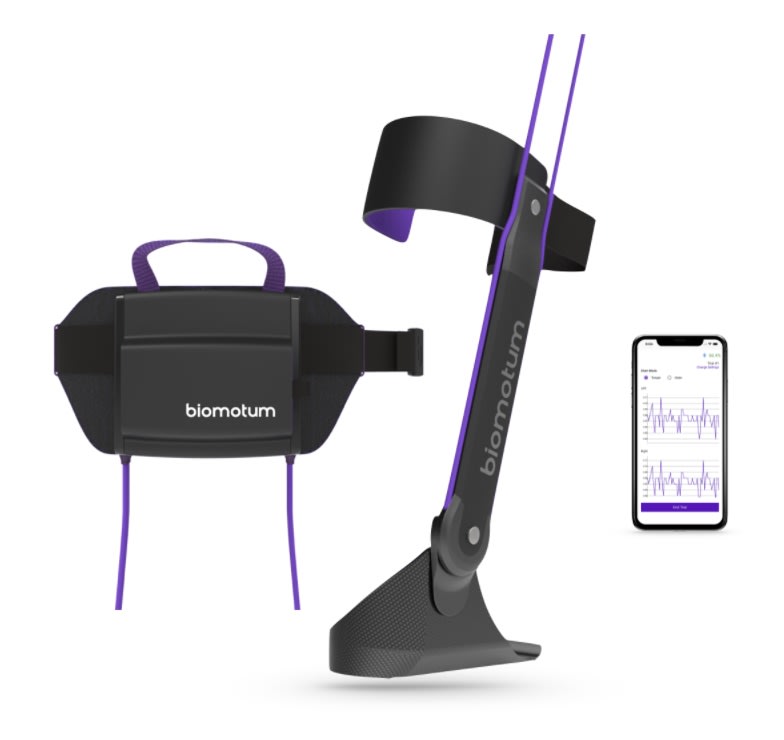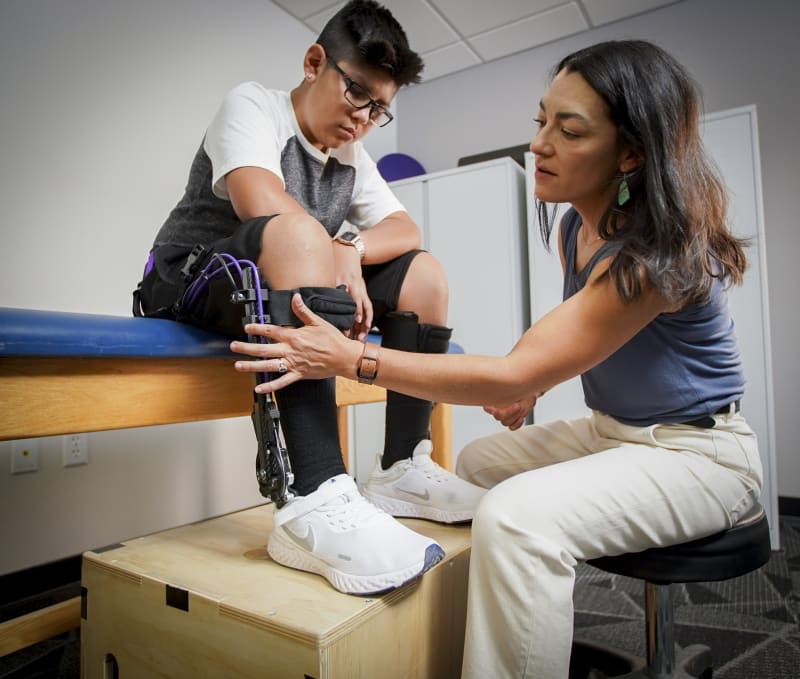
A team of engineers is on a mission to redefine mobility by providing innovative wearable solutions to physical therapists, orthotic and prosthetic professionals, and individuals experiencing walking impairment and disability. Co-founded by Ray Browning and Zach Lerner, Portland-based startup Biomotum, aims “to empower mobility by energizing every step” through their wearable robotics technology.
Worldwide, over 1 billion people experience difficulty walking, and over 65 percent of these individuals do not achieve their walking goals, even after rehabilitation or while using assistive devices. “This is because rehabilitation is inefficient and insufficient, and assistive devices like ankle foot orthoses do not actively assist individuals during typical walking tasks. To address this problem, we are developing powered bracing solutions that can aid both in rehabilitation and daily living. We call them an e-bike for your feet,” said Browning, the CEO of Biomotum.
Rehabilitation robots have existed for many years. The early systems provided repetitive, consistent motions that helped patients regain mobility and function, particularly after a neurological injury. “Researchers discovered that having patients perform appropriate motions (e.g., walking using a bodyweight support system) lead to meaningful improvements in neural and physical function. This paved the way for the tethered and untethered systems that are used today,” said Browning. “We are capitalizing on advances in robotics and electrification of transport to build relatively simple, powered ankle braces that can transform walking function,” he added.
The Biomotum SPARK, the company’s robotic exoskeleton system, is a lightweight, battery-powered ankle exoskeleton designed to deliver joint assistance or resistance during typical walking activities. The system comprises an ankle actuator, a waist pack, and a control interface.

Built from ultra-lightweight carbon fiber components, the ankle actuator delivers fine- tuned plantarflexor and dorsiflexor torque to the body while adding minimal mass to the lower limb. The waist pack is home to the brains, battery, and motors. A single rechargeable, interchangeable Li-ion battery powers high-performance brushless DC motors that drive ankle actuation. A mobile app controls the device and tracks usage.
“We utilize modeling and simulation software throughout our product's development. This includes CAD software (SOLIDWORKS), finite element analysis (Simulia), and custom Python models,” said Browning. “These tools are instrumental in predicting device performance, structural integrity, thermal behavior, and expected product life, thereby streamlining our design process and facilitating informed design decision making while reducing reliance on early stage physical testing.”
Building wearable robots that meet the expectations and needs of the provider and patient is extremely hard, and there have been challenges along the way. “Many designs start as engineering solutions, rather than a solution that a patient wants. Understanding what the user needs are, particularly if the user has never seen or used similar technology, is challenging,” said Browning. In addition to usability, he said, durability, aesthetics, and cost also make this problem hard to solve.
The advantages of assistive robots, however, outweigh the challenges. In some cases, they can provide life-changing improvements. “Our systems are being used in research projects around the world where the objective is to improve walking function in a patient population (Cerebral Palsy, stroke, Parkinson’s Disease, ALS, spinal cord injury). Over 200 individuals have taken more than 2 million steps in our systems,” said Browning.
The next step for Biomotum is to gain regulatory clearance and launch the solution into the rehabilitation market, followed by the assistive device market. “We expect to have our first device in the clinical market in 2026,” he said.
Browning believes assistive robots will become much more common as we learn how they can be used to efficiently and effectively to help individuals obtain or regain function. As AI capabilities increase, assistive robots will be able to adapt to the changing needs of individuals, without needing to be told to do so. “Perhaps most importantly, AI-enabled assistive robots will dramatically shorten the time it takes for effective therapies to become widely adopted as standard of care,” he added.











-1.png)


